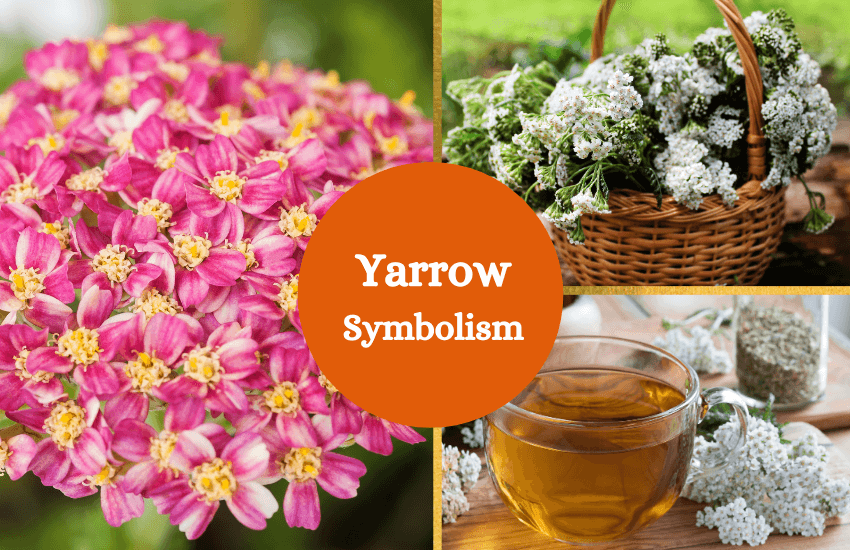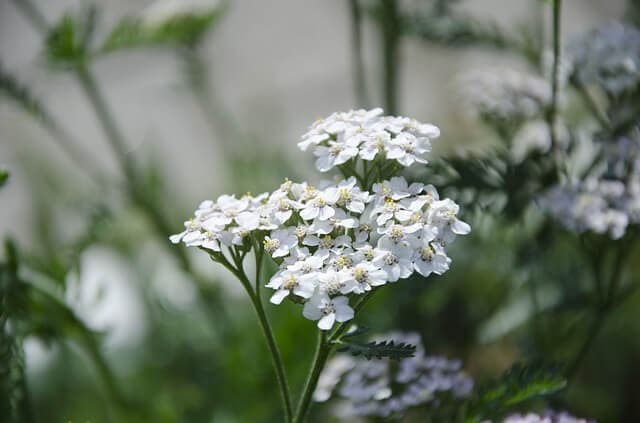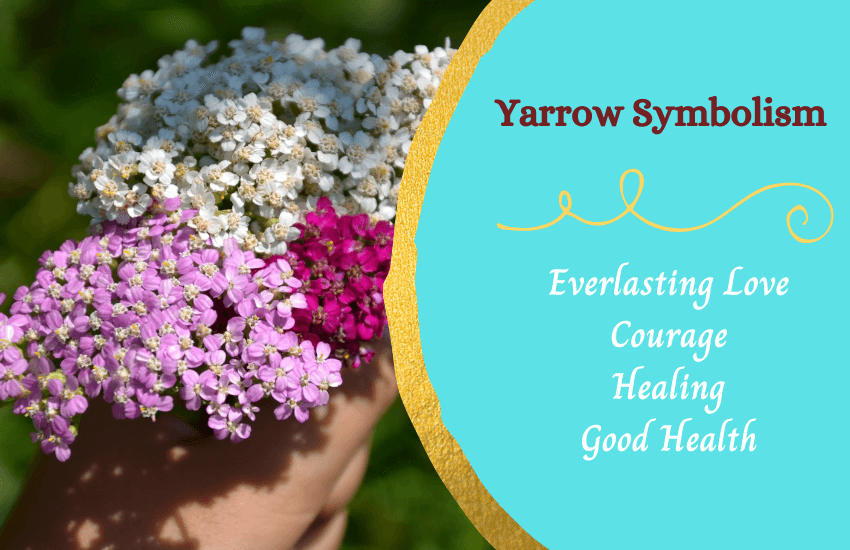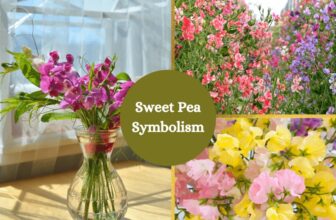
Table of Contents
Commonly seen in cottage and butterfly gardens, yarrows boast decorative flower clusters and feathery leaves. Here’s a look at what makes this bloom so special, along with its rich history and significance today.
About the Yarrow

Native to the temperate regions of Europe, Asia and North America, yarrows are the dainty flowers from the Achillea genus of the Asteraceae family. Its common name comes from the Greek word hiera that means holy herb. However, these flowers have gained a lot of names, including old man’s pepper, nosebleed plant, carpenter’s weed and woundwort, just to name a few.
The most common variety is the A. millefolium, in which mille means one thousand, and folium means a leaf, referring to the flowers’ feather-like foliage. In some regions, it’s more commonly known as plumajillo, which translates to little feather.
Yarrows have umbrella-shaped flower clusters that look like miniature daisies, and can be seen in many different colors, such as yellow, white, pink and red.
The flower has a sweet scent similar to tarragon and anise, which attracts many insects and butterflies. They’re commonly cultivated as garden ornamentals around the globe, and can thrive in hot, humid climates, as well as in drought-prone areas.
- Interesting Fact: In botany, these flowers are regarded as a plant doctor, since they’re often placed near other plants to keep the pests away. Unfortunately, they can be considered as invasive in some regions too, as they spread easily. Also, they shouldn’t be confused with the similar looking poison hemlock or the Conium maculatum, which is toxic.
Myths and Stories About the Yarrow Flower
The scientific name of yarrow, Achillea, sounds like Achilles, the hero of the Trojan War in Greek mythology. According to Pliny the Elder, Achilles discovered the yarrow flower that heals wounds.
According to some accounts, Achilles used certain varieties of the plant, especially the fern-leaf or the cloth of gold yarrow, to heal his soldiers, the Myrmidons. This is why yarrow is also known as allheal or soldier’s woundwort.
In another account, yarrows are believed to have sprung from some metal scrapings off his spear, which he then applied into the wounds of Telephus to cure him. However, some stories say that it was the verdigris with antiseptic quality which cured his adversary.
Meaning and Symbolism of the Yarrow
The bloom isn’t only legendary, but also symbolic. In the language of flowers, here are some of the symbolic meanings of yarrow:
- Everlasting Love – In modern times, the flower has become associated with love, since it has been used in weddings and even hung over matrimonial beds, in hopes of fostering true love for seven years after marriage. This is why the flower is also called seven year’s love. In some contexts, yarrows are also regarded as a cure for a broken heart.
- Courage and War – Sometimes referred to as the soldier’s woundwort, military herb and knight’s milfoil, yarrow represents bravery, especially during war. It’s also thought that wearing the bloom will provide protection and courage.
- Healing and Good Health – Apart from the mythical Achilles, the battlefield surgeons of the American Civil War also applied the crushed flowers and leaves to bullet wounds.
- A Representation of Psychic Powers – Yarrows are said to have mystic powers, so they are also regarded as a symbol of magic. Apart from exorcism, they’re also associated with spells, incantations and animal communications. The bloom is also called snake’s grass, devil’s nettle, death flower, and bad man’s plaything.

Uses of Yarrow Flower Throughout History
These decorative blooms aren’t just beautiful—they’re also used in numerous ways, especially in medicine, cooking and in the beauty industry.
- In Magic and Superstitions
Yarrows have been found in Neanderthal graves and was likely used by the early humans as a sacred herb. It’s also thought that the Druids incorporated the plant stalks and branches in their rituals to foretell the future and the weather. In medieval Europe, many had used them to summon or banish evil spirits.
In Chinese divination, especially in I Ching or Yi Jing, the stalks of yarrows have been used for divine messages, which can be traced back to the Chou Dynasty. In some cultures, they’re believed to foster friendship, harmony, courage and attraction, as well as to create the future of your dreams.
It’s said that to dream of yarrows means someone will hear good news.
Nowadays, some rituals related to yarrows are still practiced, such as burning dried flowers as incense, in hopes of filling one’s home with love and happiness, as well as adding them in bathwater to gain psychic powers. Some even place them under their pillows for prophetic dreams. In Ireland and France, yarrows were one of the herbs of St. John that were burned, so the smoke would give protection against evil.
- In Medicine
Disclaimer
Apart from the ancient Greeks, the Crusaders of the Middle Ages also utilized the plant as an early wound treatment. Also, various American tribes made infusion from yarrows to heal sores, boils and other skin problems. In 1597, English herbalist John Gerard suggested the leaves as a remedy for toothache—and the plant remained a popular first-aid treatment until the early 19th century.
In general, they have anti-inflammatory, anti-allergenic and astringent properties, which prevent infection. Nowadays, there are still healing creams made of yarrows and borage for treating bruises, scratches and burns. Certain varieties of the plant are also made into teas for alleviating colds, fever and influenza.
- In Beauty
For centuries, the flower has been used in cosmetics due to its astringent quality. Some American tribes, especially the Cowlitz people, have used yarrow flowers for herbal hair rinses. Also, the yarrow tea is said to be beneficial in maintaining hair color and preventing hair fall.
- In Gastronomy
Certain varieties of the plant are edible and are commonly incorporated into stir-fries and curries. Since yarrows have a strong taste, they’re popular in pumpkin stews and kedgeree with fish fillets, lemons and almonds. In Scandinavia, they have been used for centuries in brewing beer and as spices.
The Yarrow Flower in Use Today
These dainty blooms are perfect edging plants and groundcovers, especially in rock gardens and borders. Think of Coronation Gold variety that showcases its mustard-yellow blooms, as well as the Cerise Queen with bright pink flowers if you’re looking for colorful yarrow varieties.
Yarrows are softer and more romantic than other vibrant blooms, making them ideal in country wedding arrangements. They’re a great filler flower in posies, flower crowns, garlands and centerpieces—not to mention they’re wilt-proof and look great when dried too.
When to Give Yarrow Flowers
Are you looking for a lovely and meaningful get-well gift? Since yarrow is associated with healing, it’s an excellent flower to give to a someone who isn’t feeling well.
A bouquet of yarrows can also be a romantic way to celebrate anniversaries, Valentine’s Day and other special occasions. Since these flowers are also a cure for a broken heart, they can be given to someone going through a breakup.
In Brief
Apart from its beauty, yarrows are also valued for their therapeutic and gastronomical uses. As a symbol of good health, everlasting love and courage, these flowers are excellent to give on a variety of occasions.








